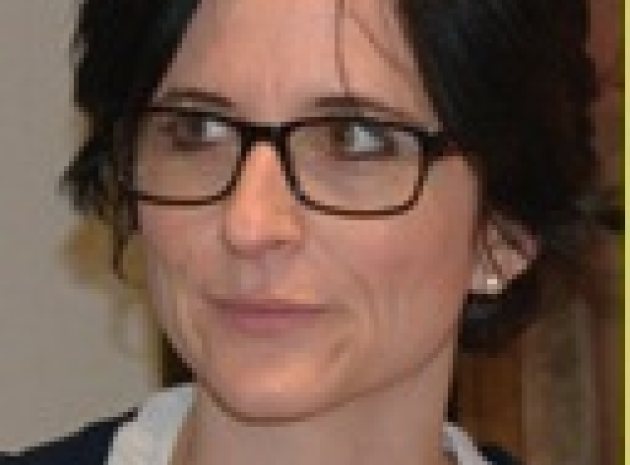Helen Cunningham continues her overview of GQ reform with a closer look at the changes in store for teachers of GCSE mathematics…
From September, GCSE maths will be a fully linear course with an increase of approximately 15 per cent in subject content, greater assessment and an anticipation that schools will need to increase the time spent teaching. This additional content comes with the aim of making sure every student masters the fundamentals of maths. A main focus of the new content and Assessment Objectives is an increased emphasis on problem-solving and mathematical reasoning. These additions mean there will need to be more assessment (exam) time – a minimum of 4.5 hours extra. There are content changes across all strands, including the separation out of Ratio as a distinct strand.
Not only is the content of the course changing, but the assessment criteria are as well. Significantly, quality of Written Communication (QWC) will no longer be marked separately, instead it’s part of AO2. What is having the most impact on teachers, though, is the new grading system coming into force. From September, GCSE maths students will be marked according to nine grades (1 being the lowest and 9 the highest). The Foundation Tier will cover grades 1 to 5 and the Higher Tier will cover grades 4 to 9. Interestingly, the government has also brought in a new policy on passing core subjects. From the new academic year, if a student has not achieved the equivalent to a grade C or above in GCSE maths and/or English, by the age of 16, they must continue with this subject in their further education or training. Institution funding will only be received from the Education Funding Agency for that student if their programme of further study includes an approved maths and/or English course. Speaking to teachers and education professionals, I feel this will cause a lot of frustration and difficulty in adapting to this way of teaching and assessment.
Challenges to face
I’ve already mentioned that grading, progress tracking and accountability will have a great impact on teachers notably through the new 1-9 grading system - but also through Progress 8, new accountability progression measures in 8 subjects, and maths being double-weighted in school league tables. For teachers, this new grading system makes progressing and understanding what grades mean potentially more difficult.
Adjusting to content changes in any course is challenging but in the GCSE maths course, the increase of 15 per cent new content is dramatic. These changes include material from the higher paper that is moving down to the foundation paper. There is also more demanding material in the higher paper, which has moved down from A Level - and brand new content and topics in both higher and foundation papers. Content changes means suggested increase in precious teaching time, something that is already increasingly stretched. Teaching may become more challenging as more demanding content is to be taught, including new topics that some teachers may not have come across before.
As expected, changes to the curriculum means changes to the exam structure of the course. From September, the GCSE maths course will be fully linear, where exams are taken at the end of the course. There will also be no re-sits offered until post-16. Tracking students’ progress may be more difficult and teaching styles may need to be altered, so instead of teaching in distinct sections for modules, there will be a cumulative build up to the full exams.
Assessment objectives are also changing under the new curriculum changes. There will be greater emphasis on problem solving and reasoning skills, especially at higher tier, with more weighting now on the new AO2 and AO3, which have revised content from the current AO2 and AO3.
Opportunities to grasp
Although linear and terminal assessment has its drawbacks, it also presents a whole host of opportunities. Linear assessment promotes a synoptic approach to maths, treating it as a whole rather than as a series of unrelated topics. This method of assessment allows teachers to link topics so students can see how concepts are related, and perhaps how they are relevant outside the maths classroom.
Synoptic assessment is one of the fundamental principles of the new linear A Levels, so the new GCSE, which also has this type of assessment, helps students to prepare for the next educational step. It is also a key feature of the new Core Maths suite of qualifications, so building these skills at GCSE will prepare students for a range of further study, including those subjects where mathematics plays a more minor, but nevertheless key, role.
It is important that students develop the ability to think about the ‘why’ of each step in solving a problem, not just the ‘how’. The increased emphasis on problem solving and mathematical reasoning in the new curriculum encourages students to develop a ‘tool box’ of skills, from which they will be able to choose the most appropriate to solve problems, without being constrained to distinct topic areas.
Another important aspect for teachers is the freedom for them to decide how they deliver the course, over two, three, or even five years, as they are not bound by any intermittent formal assessment dates.
In terms of governmental support, National Maths Hubs have been set up across the country. These Hubs will provide schools and colleges with local, quality support in all areas of teaching and learning, allowing teachers more varied access to support and advice.
About the author
As last issue, p.57 ‘The Best of Times








